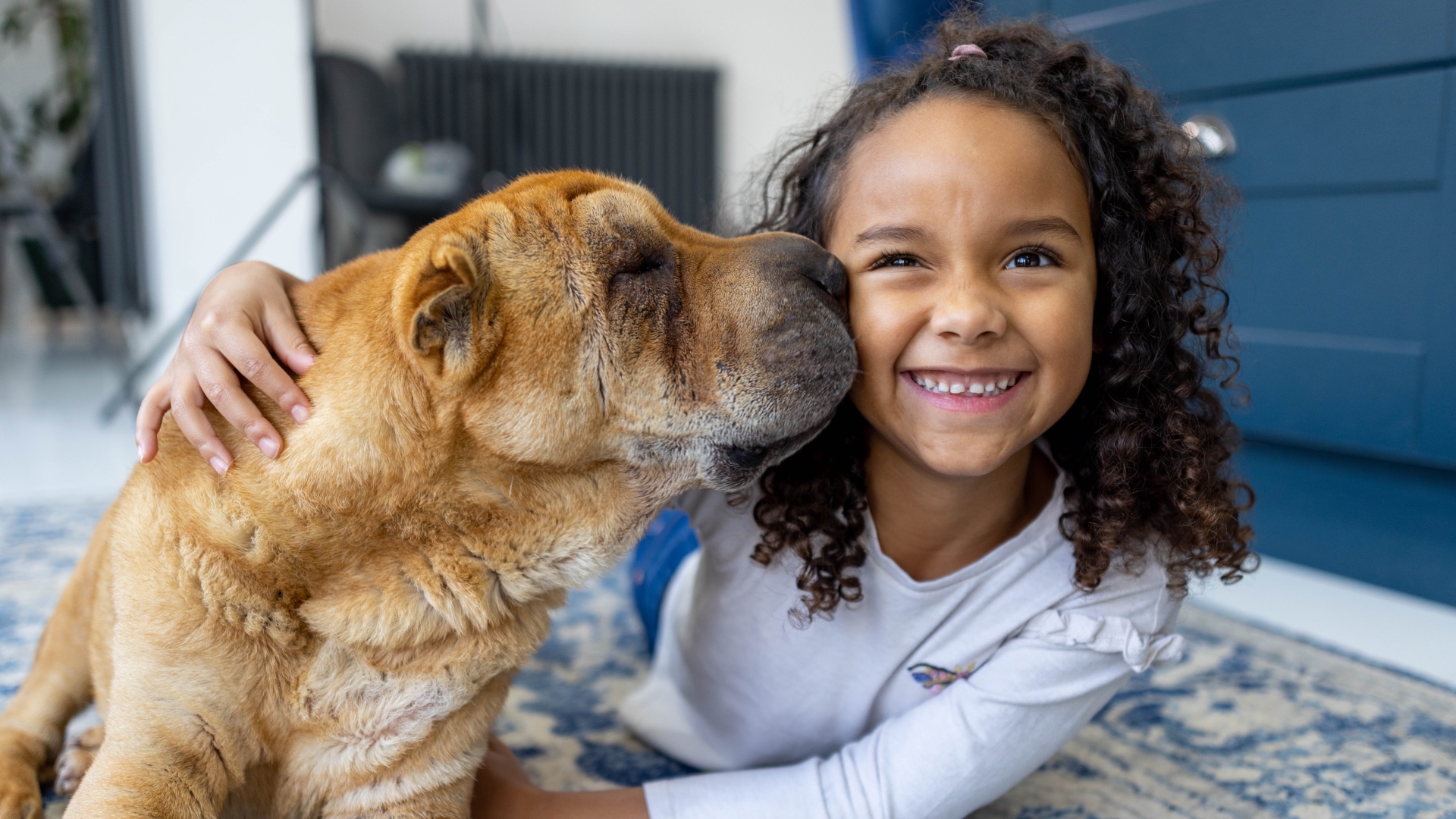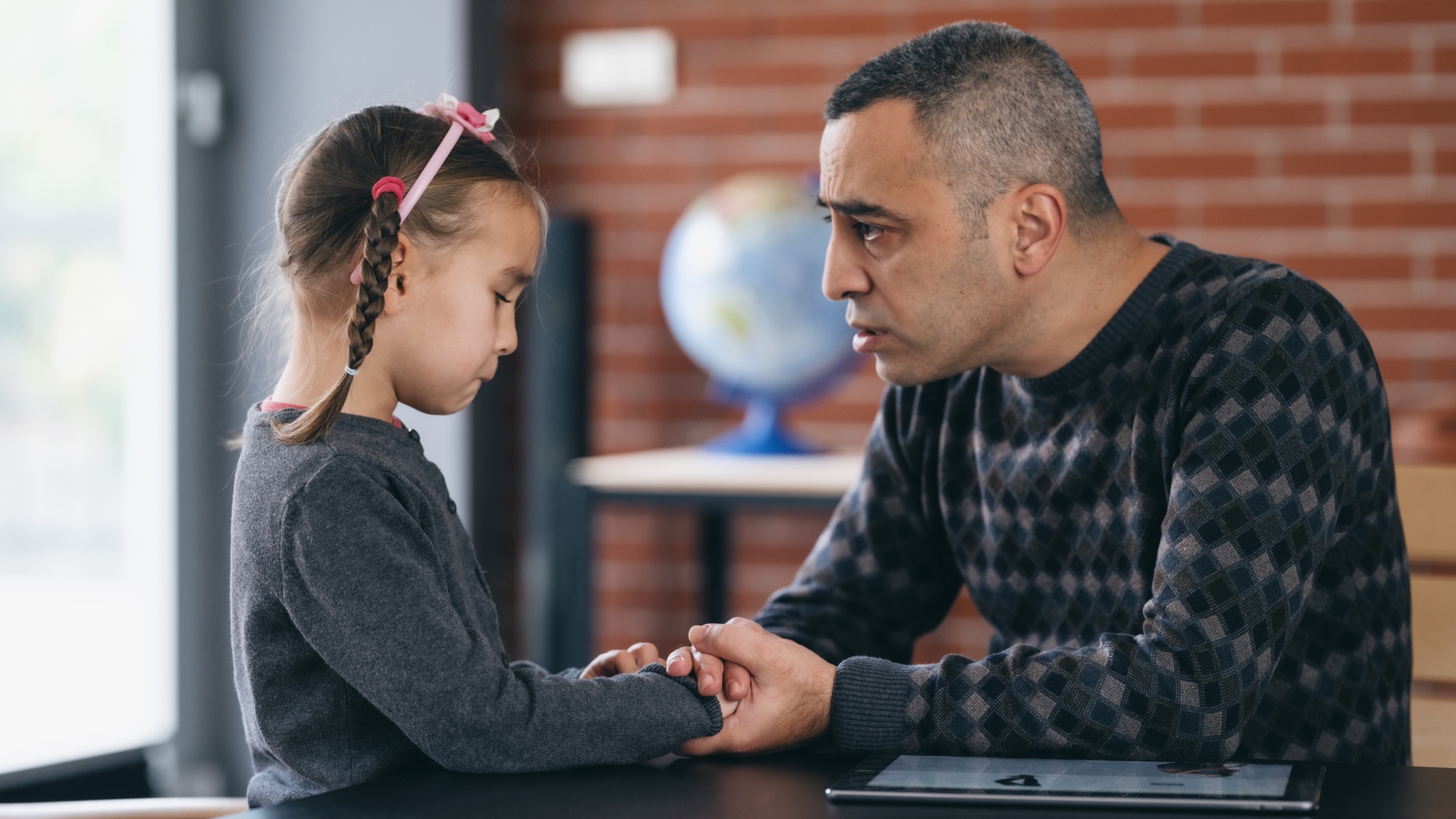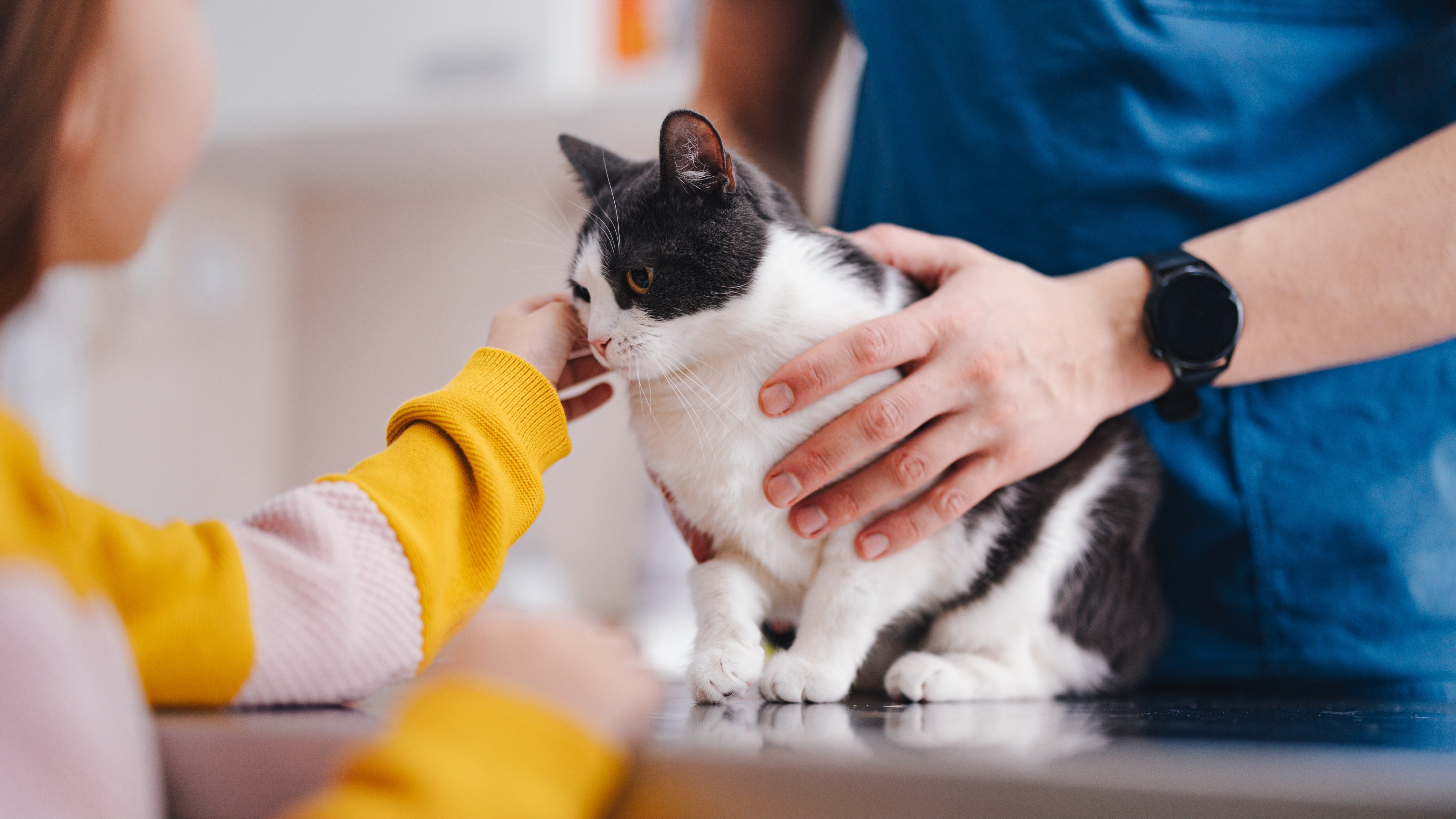
How to help children cope with the death of a pet is something you might be curious about if you're a parent, caregiver, relative, teacher or someone who simply spends a lot of time with young people.
There are so many things nobody tells you when your pet dies and it can leave you feeling lost, isolated and alone. For example, why are we not told that the death of a treasured pet can hurt just as much (sometimes even more so) than the death of a person?
This can be especially true for a child who may have considered their cat, dog, small animal or other pet to be their best friend. For many children, the death of a pet may also be their first experience of loss and grief and so how this sensitive time is navigated can shape how they engage with future losses.
Learning how to cope with the loss of a pet isn't easy, but after more than a decade working in end of life care as a social worker and lecturer, there are some things I've learned about grief that I hope will help you in supporting the child in your life as they navigate this difficult time. And just in case your pet is needing to be (or was) euthanised, I consulted expert vet Dr. Hannah Godfrey to get her to explain in simple terms what happens during this process.
How to help children cope with the death of a pet
Before I share some tips around things you can do to help the child in your life process their grief, I'd like to first offer some gentle words of encouragement and support for you as the adult.
These conversations are not easy and because of that, what many of us would often prefer to do (very understandably) is to avoid having them. After all, most of us did not receive any education around death and Western society does a great job of pretending death doesn't exist. However, what we know about humans is that we tend to fear what we don't understand and this can cause us to step back when we need to step forward.
Supporting children in their grief and having open and honest conversations takes courage and you deserve to be acknowledged for that. I hope the tips that follow help you feel more comfortable and confident as you move through this process together.
1. Validate their feelings

Just like us adults, children need to feel seen, heard and understood. Grief can bring up a lot of different feelings and emotions for children and being able to express these in a safe and supportive environment is really important.
Validating a child's feelings means acknowledging how they're feeling in that moment without judgement and any expectation around how you think they should be feeling.
When we validate, we're not fixing, correcting or using the moment to offer advice, we're simply being with a child in their experience.
Emotional validation is important because it teaches children not only that feeling and expressing their emotions (however big) is okay but that we as adults can handle this and provide them with a secure base from which to explore them.
If a child in your life comes to you and says that they're feeling sad about their pet dying, validating their emotions would be as simple as saying to them: "You feel sad that Luna has died. That makes sense to me."
2. Be clear and honest
As adults, it's natural that we want to protect children from hard and painful things, but trying to shield them from death can actually do more harm than good.
I encourage you to be honest with the child in your life about what has happened because what we know is that the outcomes for children are much better when the adults in their life communicate with them clearly and openly using age-appropriate language.
Avoid using confusing terms, expressions or euphemisms as children do not yet possess the mental capacity to be able to understand these. Steer clear of words and phrases like 'gone to sleep', 'passed away', and 'lost' and instead stick to the correct terms, such as 'death', 'died', and 'dying'.
Euphemisms can cause a lot of anxiety in younger children, particularly phrases like 'gone to sleep' as they may think they can wake their pet up or worry that if their parent or caregiver goes to sleep that they won't wake up.
While using the correct words can feel harsh to adults, they are the words that make the most sense to children. This is particularly vital for children who have learning disabilities and using pictures and symbols with these children can help ensure they understand what it is you're communicating to them.
3. Help them to understand death

Death can be a difficult thing for children to understand. While adults can often view death as too frightening a topic to discuss, children really benefit when we use a simple framework to help them understand what death is and what it means.
It can be challenging to know where to start when it comes to explaining death and what a child understands will differ based on their age or stage of development. However, the four main concepts of death are the same for all ages — it's just the language that will require adjusting.
First, children need to know that death is final and that their pet is not coming back. Most children have seen cartoons where characters die and come back to life, so they need to know that in real life, death is irreversible.
Second, children need to know that their pet is not suffering. This means explaining to them that once an animal (or human's) heart stops and their body stops working, they no longer feel the things that we do — for example, pain, hunger, thirst, sadness or any other feeling or emotion.
Third, children need to know that everything that lives will die someday. While this is very hard for us to communicate and very difficult for children to hear, it's important that they understand how the life cycle works. This may cause them to ask questions, such as 'will you die, too?' — a way to answer this is to say something along the lines of 'I'm healthy and doing everything I can to look after myself, so I expect that I'll be with you for a very long time. But yes, just like everything else that lives, I will die one day. If you ever feel scared about this, please tell me and we can talk about it."
Lastly, children need to know that they are not to blame. Children often engage in something known as magical thinking, that if they could have somehow been different or done something different, the outcome would have been different. If you sense that this might be going on for your child, for example, they say something like 'Milo scratched me and I wished he were dead', reassure them that they are not to blame.
4. Help them to remember their pet
Providing children with a way to remember their much-loved pet can help to provide them with an outlet for their grief.
Some of my favorite things to do with children are memory boxes, scrapbooks, letter writing, drawing, and planting a tree in the garden. Creating a jar of memories is also a beautiful remembrance activity, as is painting a stone, making a memory bracelet or having a treasured photo framed.
How grief may affect children

As adults, we often want to protect children from the hard and painful parts of life, however children are more likely to feel stressed and anxious when they know that things are being kept from them.
One thing that's worth keeping in mind is that children often respond and react to grief in a very different way than adults. It's very normal for a child to receive bad news (such as their pet dying), to have an outpouring of emotion (such as tears) and to then to suddenly ask if they can go outside and play. You may then notice them laughing only for them to become sad or angry later on.
This is something known as 'puddle jumping' and it is a natural thing for children to do. Unlike adults, children don't have the capacity to maintain any one emotional state for long periods of time and so they jump between them, moving in and out of the 'puddle' of grief — sometimes at lightning speed!
You may also notice that you tell a child their pet has died and they offer very little reaction at all. This is also normal. If you tell them their pet has died and they suddenly ask if they can have an ice-cream, you may wonder if they've understood. It's worth remembering that children often take longer to process their feelings and to find the language to talk about them.
In instances like this, letting them know that you understand what a big piece of news this is and that you'll be there for them when they're ready to talk about it, can take the pressure off and help them to navigate their feelings at their own pace. I also highly recommend the film 'Inside Out' to encourage discussions around emotions — it's a wonderful watch for both children and adults.
What happens during a euthanasia appointment?
While some pets die suddenly, with others we may need to make the difficult decision of having them euthanized due to illness or age-related pain and mobility issues.
In these instances, it may be helpful for you to know what happens during a euthanasia appointment so you can explain this to a child in simple terms. For this, I turned to vet Dr. Hannah Godfrey — here's what she had to say:
"During a euthanasia appointment, the vet will spend some time making sure everyone feels prepared and the pet feels at ease. They’ll ask an adult owner to sign a form to consent to the procedure and then answer any questions or concerns. Many vets will inject pets with a sedative first, especially if they're wriggly or frightened. After the sedation, the pet will drift off to sleep over 5 to 10 minutes.
When it’s time for the euthanasia procedure itself, the vet may ask a nurse to come in and help. The procedure involves injecting a strong anesthetic, usually given into a vein of the front leg, but sometimes into a vein in the hind leg, or the heart, liver, or kidney if the pet's blood pressure is low.
After the injection, the pet's heartbeat and breathing will gradually slow down until they pass away. This can take a minute or two, and sometimes longer if sedation has been given. Animals don't close their eyes after death, and they may take reflex breaths or gasps for a few minutes. While this can be distressing to see, it’s completely normal."
Should I bring my children with me?

Sometimes, children may want to accompany you to the vet to say goodbye to their beloved friend. Many adults struggle with what to do in these situations. Here's some advice from Dr. Godfrey:
"It’s a personal choice whether you choose to bring children with you for your pet’s euthanasia appointment. Of course, children are part of the family and you may feel they should have the opportunity to be there if they want to. While it’s sure to be emotional, many children cope better than expected, especially if they’re prepared for what will happen and have had the opportunity to ask any questions.
On the other hand, saying goodbye to a pet is very distressing, and you or your child may feel that it’s not a good idea. If you do bring your child, explain beforehand what they should expect, and let them know that they can change their mind at any point. It’s also important to check in with them regularly afterward to check that they are coping and whether they need any support."
I would add that you know the child in your life best and there is no right or wrong decision here. If you do decide to take them with you, just be sure that you explain the process first so they know what to expect.
Is euthanizing a pet painful?
Children often worry that their pet will be in pain when they're being euthanized, however Dr. Godfrey reassures us that this is not the case.
"It’s understandable to be concerned about pain during your pet’s euthanasia. However, the only pain associated with euthanasia is from the needles used for injecting. If your pet is given a sedative, they’ll feel a sharp scratch when the sedation is given then drift off to sleep without pain and won't be aware of anything that follows. Without sedation, again there is a sharp scratch from the needle, but this is over in a fraction of a second and the procedure itself is painless."
What happens to a pet's body afterwards?

Finally, if you have had to make the difficult decision to have your pet euthanized, you may be wondering what happens next. Because they're your pet, you have full decision making powers over what you'd like to do with their remains, says Dr. Godfrey.
"What happens to your pet after they have been euthanized is your choice. You may wish to take them home to bury them in the garden (check local laws) or organize cremation yourself. However, the vet can support you by organizing your pet’s cremation, with their ashes returned if you wish."
For children, ceremonies where they can say goodbye to their pet can help provide them with an outlet for their grief. You may wish to pick some special flowers from your garden to place in with your pet or add in favorite items like toys or their collar before burying them or having them cremated. Some children may also like to draw a picture or write a poem to put in with their special friend.
While the death of a pet can be a hard time for children, your love and support can make all the difference when it comes to helping them feel and process their emotions.
One final thing I would say is don't be afraid to share your own sadness. We understandably often want to protect the children in our lives, but it's okay and very healthy to let them see you cry or to tell them that you're feeling sad.
Adults often worry that if they do this, they'll somehow damage their children but as long as you're not swapping roles and expecting your child to comfort you, healthy displays of emotion teach children that grief is nothing to be scared of.
If you'd like further help and support, I highly recommend reaching out to The Association for Pet Loss and Bereavement who can help with providing resources for both you and your child or Lap of Love, a wonderful veterinary hospice who have a wealth of resources available for young children.
While supporting the children in your life is important, it's also just as vital that you take good care of yourself at this time. With that in mind, here's 32 tips for coping with the death of a pet.







